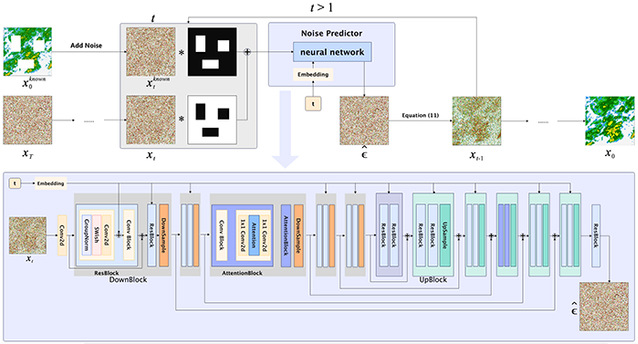The research team led by Professor Zhang Wei and Professor Dong Junyu from the Faculty of Information Science and Engineering has published a series of research outcomes on AI-based weather radar inpainting in top-tier journals, including ISPRS Journal of Photogrammetry and Remote Sensing and IEEE Journal of Selected Topics in Applied Earth Observations and Remote Sensing. Guided by the implicit knowledge of weather radar specific to certain climate and terrain conditions, the research introduced the MCMC (Markov Chain Monte Carlo) sampling process and the Langevin dynamics mechanism, and further proposed a fully unsupervised weather radar inpainting algorithm and model named CIDM (Comprehensive Inpainting Diffusion Model). Crucially, this study creates a new research pathway for weather radar inpainting by leveraging unsupervised generative models.
Since 2023, the team has achieved fruitful results in large AI models for meteorological and marine environmental forecasting. They have utilized multi-task learning to address the challenge of simultaneously correcting both wind field direction and magnitude across the entire Northwest Pacific with a single model. The team developed a dynamic Pixel-Switch Loss Function to tackle difficulties in correcting large values of significant wave height, and introduced the Pixel Prediction Network (Pixel-CRN) to overcome challenges in nowcasting amidst the scarcity of strong convection samples. Built upon China’s independently developed Ascend 100P computing platform and MindSpore ecosystem, the team successfully developed the “Langya Bo” meteorological and marine environmental forecasting model. This self-developed model has obtained Huawei certification (No: E202212825).

